Microsoft Surface Laptop: 'a sea change is in the air'
The Microsoft Surface Laptop that was shown off at the Microsoft Copilot+ PC Showcase this week might be one of the most important devices of the decade, possibly even more important than the initial M1-powered Apple MacBook Air that launched back in 2020.
That MacBook Air model, which I've long argued is still the best laptop for most people even though it's now nearly four years old, kicked off something of a revolution in interest in bringing Arm processors to PCs. Arm chips, long a staple of mobile devices thanks to their incredible energy efficiency, just haven't been powerful enough for a full laptop or desktop OS.
Nobody knows this better than Microsoft, which has worked to develop Windows-on-Arm into a viable product and has largely struggled to make it competitive even with its more restrictive Windows S-Mode devices, much less a current-gen MacBook running Apple Silicon.
Now, however, Microsoft has co-developed the new Qualcomm Snapdragon X SoC specifically to be the Windows PC's answer to Apple's M-series and finally bring the best Windows laptops up to parity with the best MacBooks in terms of battery life, compatibility, and performance — all while retaining everything that makes Windows the most popular PC operating system in the world.
All of that is going to come to a head in the Microsoft Surface Laptop. This is Microsoft's play at dethroning the MacBook Air — and even the MacBook Pro 14-inch with Apple M3 or M3 Pro — and there are a lot of reasons why it just might succeed. If it does, this will have ramifications that extend for many years and generations of laptops to come.
Microsoft Surface Laptop: Price & availability
The Microsoft Surface Laptop is available for pre-order now, with deliveries starting on June 18, 2024. The starting price for the 13.8-inch model is $999.99/£1,049.99/AU$1,899, which will get you a Qualcomm Snapdragon X Plus processor with 16GB RAM and 256GB SSD storage. The 15-inch model starts at $1,299.99 and comes with a Qualcomm Snapdragon X Elite processor, 16GB RAM and 256GB SSD.
There are a number of configuration options available, but the 13.8-inch model maxes out at a Snapdragon X Elite processor, 64GB RAM, and 1TB SSD storage for $2,399.99/£2,049, while the 13.8-inch model maxes out in Australia at 32GB RAM and 1TB SSD for AU$3,399.
The 15-inch model maxes out at 64GB and 1TB in the US for $2,499.99, and maxes out in the UK and Australia at 32GB RAM and 1TB SSD for £2,149/AU$3,699.
This makes it cheaper at the entry-level than the MacBook Air 13-inch with M3, and matches the starting price of the MacBook Air 15-inch. At max spec, the new Surface Laptop will either beat or roughly match the price of the highest-end MacBook Air.
Microsoft Surface Laptop: Design
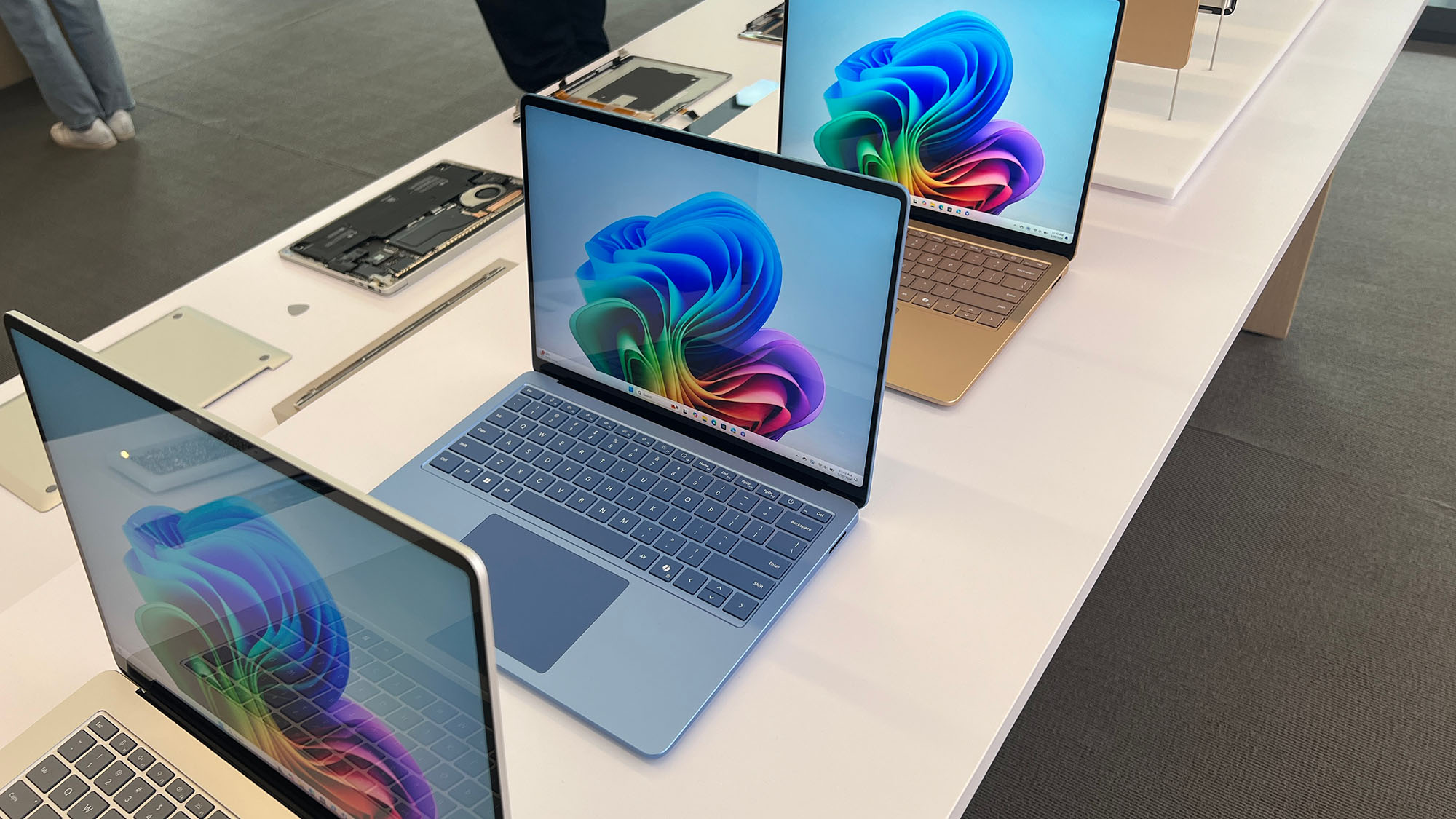
Many of the best Ultrabooks on the market have tried in various ways to copy the refined design of the MacBook Air with varying degrees of success. Having recently spent several weeks benchmarking the most recent MacBook models like the MacBook Air 13-inch, MacBook Air 15-inch, and MacBook Pro 14-inch, I think I've stared at that laptop more than just about any other device.
So it's arresting to look at the new Surface Laptop because even though the similarities are striking enough, so are the differences. For one, it was the best-looking laptop in Microsoft's entire showcase. Secondly, laying eyes on the Sapphire colorway of the 13.8-inch Surface Laptop (and Surface Pro, for that matter) exposes just how badly Apple fumbled the bag with the MacBook Air and MacBook Pro in recent years.
Apple's insistence on sticking with its painfully dull Silver and Space Gray after nearly a decade, while desaturating its Rose Gold into 'Starlight' and introducing an off-black 'Midnight' that is really just Space Gray with the brightness slider pushed deep into the darker side sent me into a hot take tailspin a couple of years back from which I haven't recovered. The 13.8-inch Surface Laptop looks like everything the current MacBook Air design should have been, but isn't.
Besides the Sapphire colorway, you can opt for other colors too, including Dune, Platinum, and Black. The latter two are fairly bog-standard for Windows laptops these days (and are the only two color options for the 15-inch Surface Laptop model, unfortunately). However, the Dune colorway offers a warm, peachy aesthetic to the device that is also attractive and different, while not being as attention-grabbing as the Sapphire is.
It's not all about the color though.
The touchscreen display, which you can get in either 13.8-inches or 15-inches, is gorgeous to look at, offering vibrant colors thanks to its wide sRGB color coverage. How much of the sRGB gamut it captures won't be clear until we fully test the Surface Laptop, so we'll just have to wait until we can get our hands on it to see for ourselves.
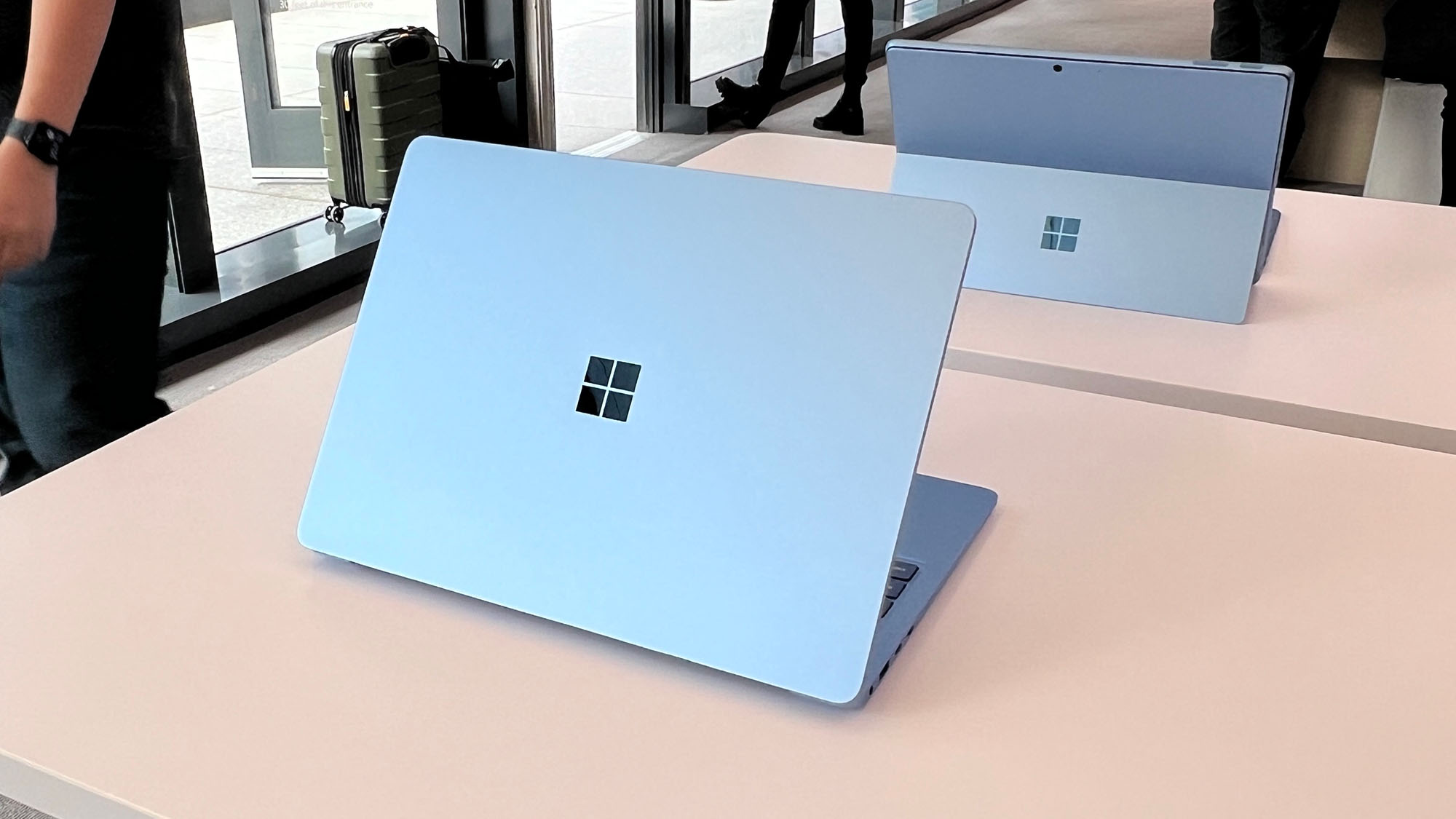
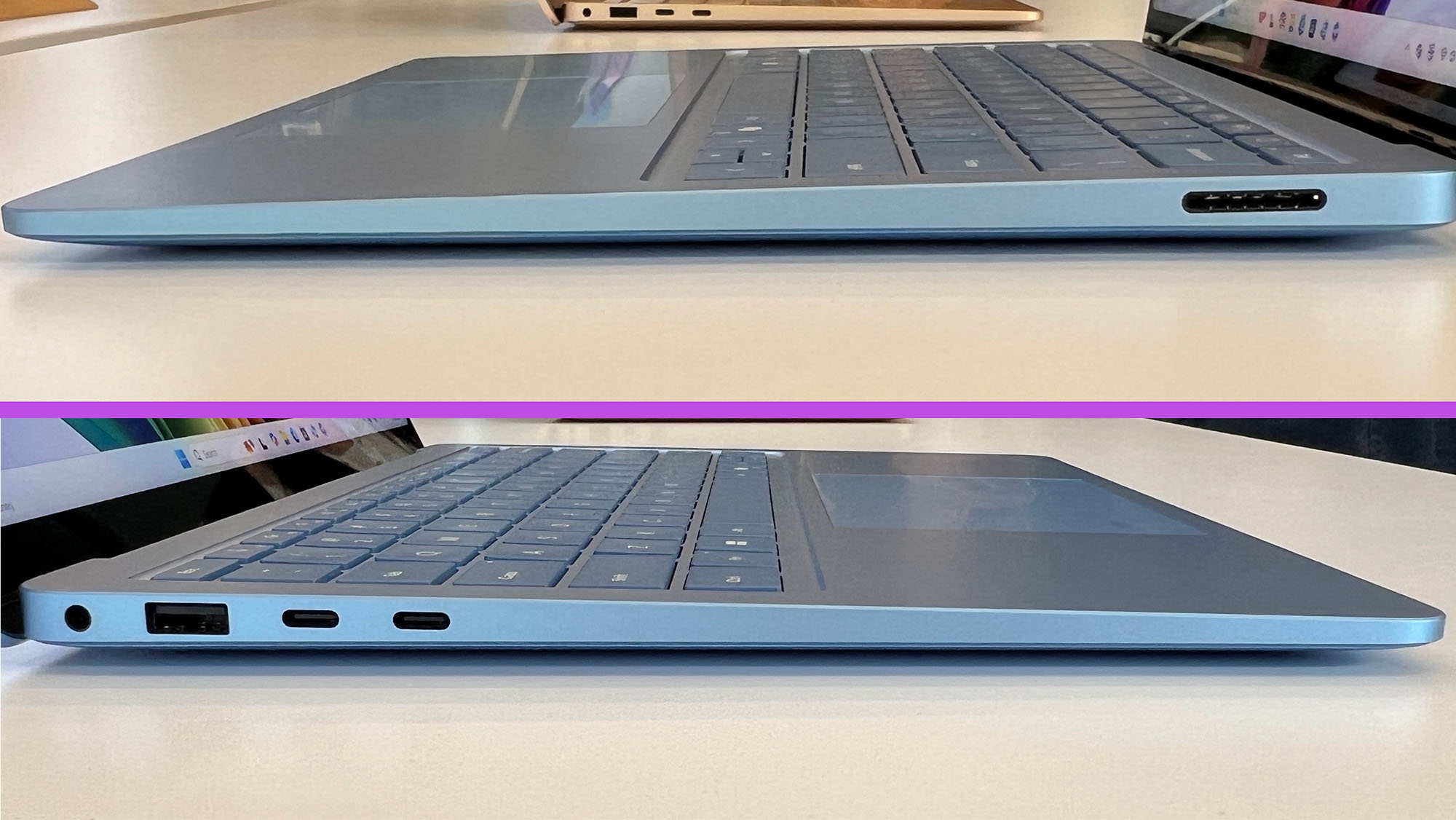
In terms of ports, this thin-and-light laptop does a reasonable enough job offering two USB 4 Type-C ports with power and display out for up to three monitors running at 4K, a USB 3.1 Type-A port for legacy devices, a headphone jack, and if you opt for the 15-inch Surface laptop, you'll also get a microSD card slot.
As far as portability goes, the 13.8-inch Surface Laptop clocks in at just under 3 lbs (1.4kg) thanks to its anodized aluminum chassis, and is just under a foot long lengthwise, and 0.69-inches tall at its widest point along the back of the laptop. The 15-inch model is slightly heavier, longer, and taller at 3.67 lbs (1.66kg), 12.96-inches (329mm) in length, and 0.72-inches tall at its thickest point.
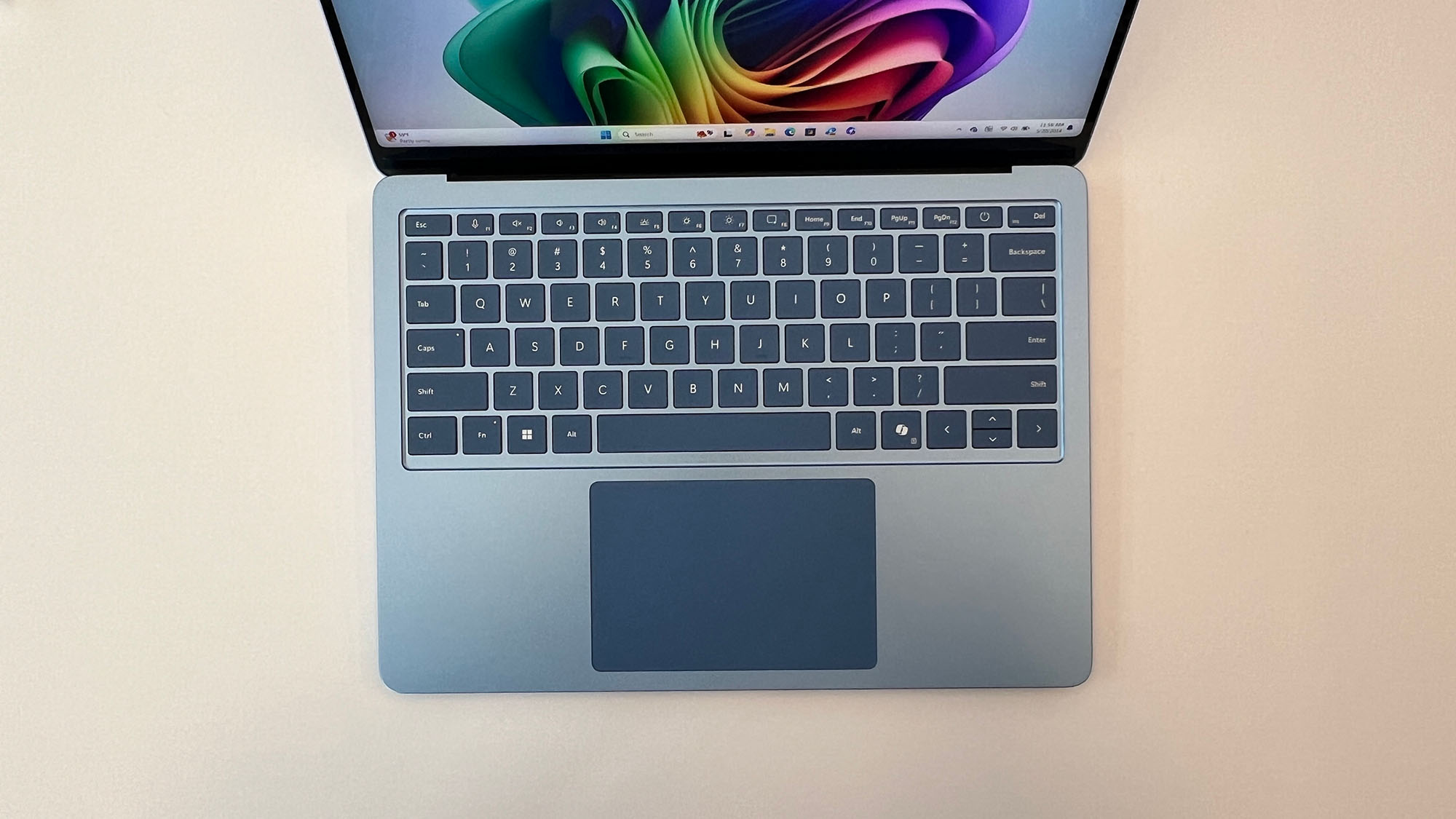
Opening it up, the keyboard is very similar to a MacBook's, but not in a bad way. It was very comfortable to type on, and the trackpad proved snappy and responsive.
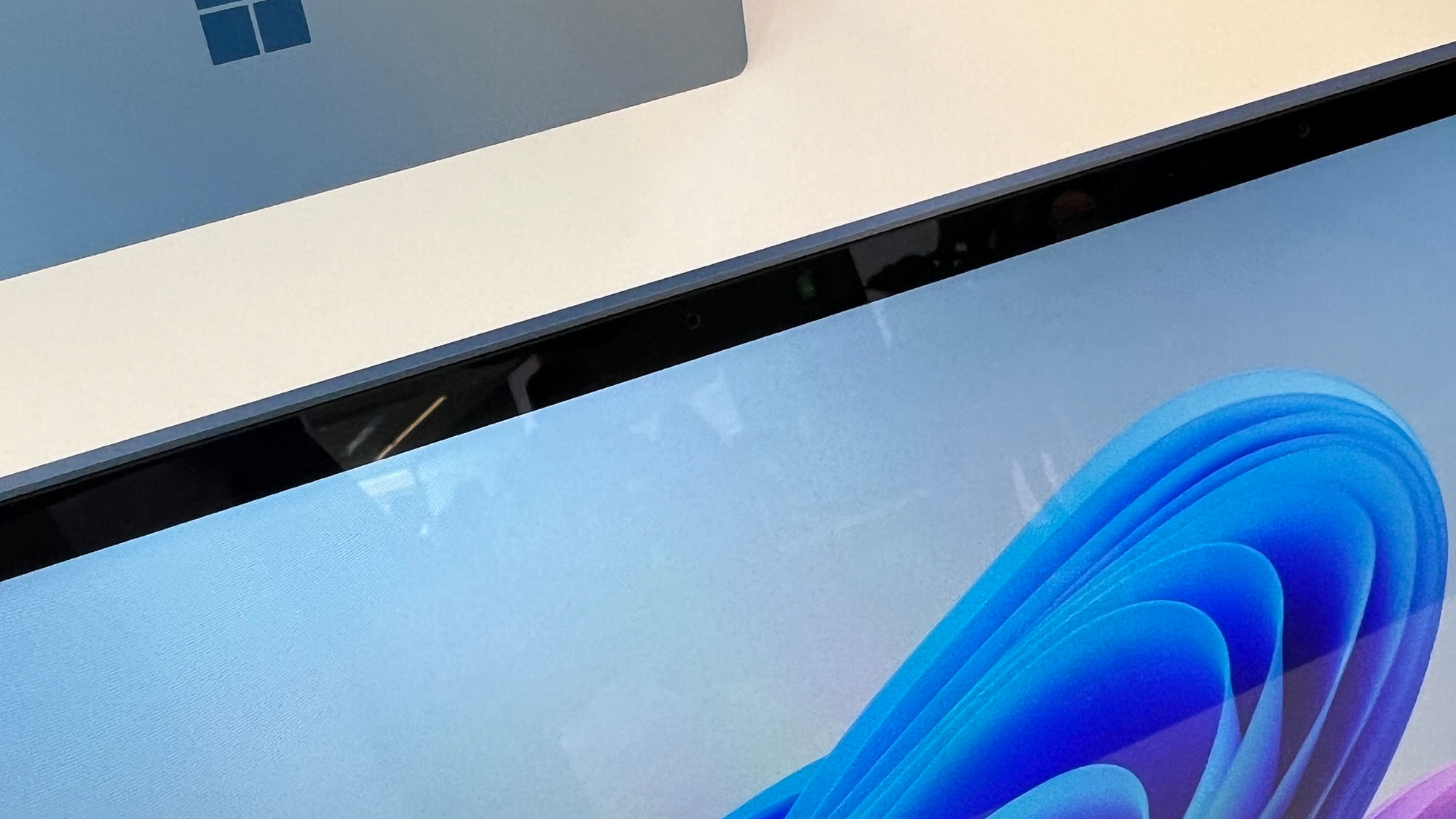
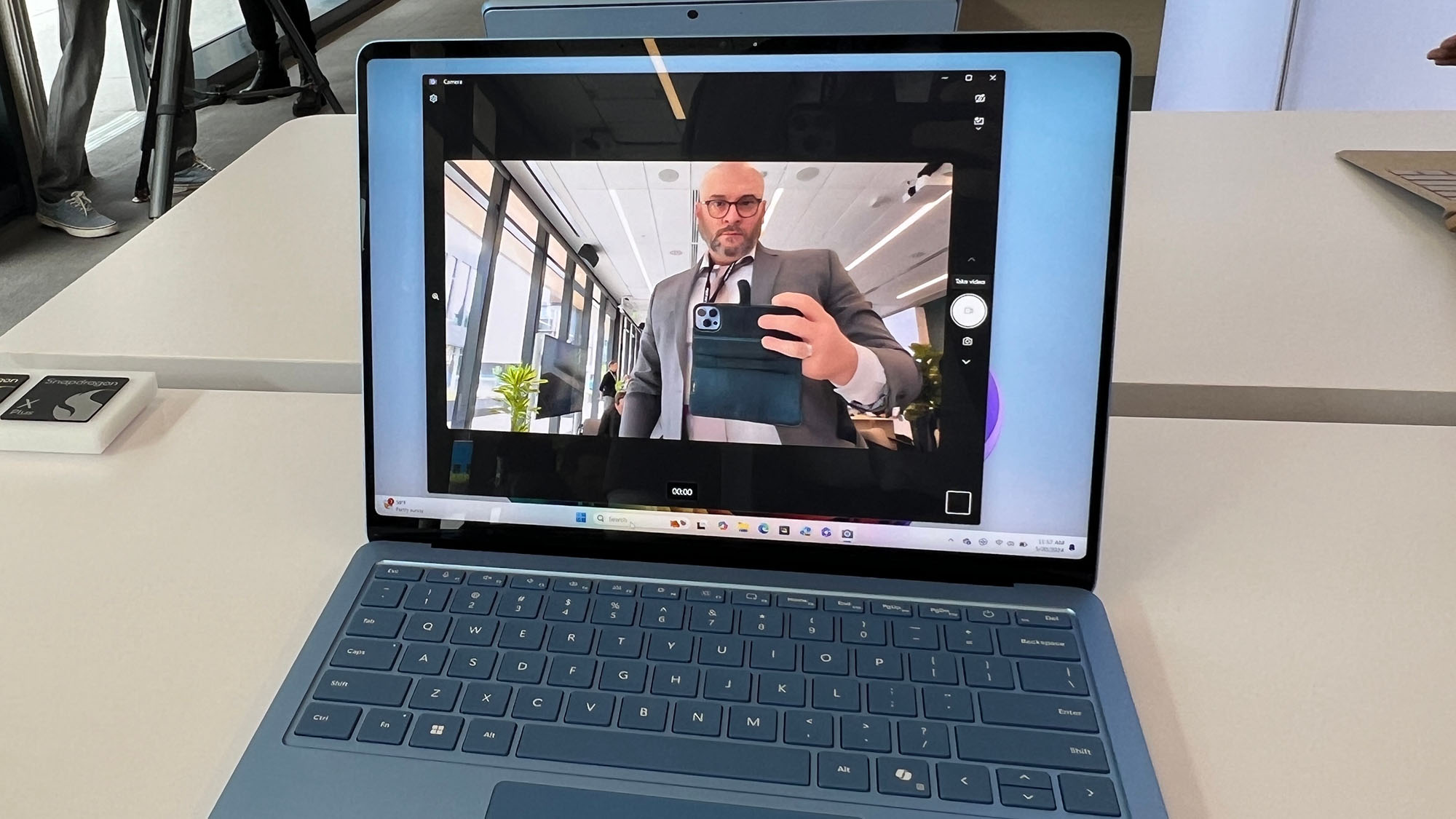
The webcam is Full HD, though it lacks a physical privacy shutter. This might be the one knock I have on this laptop's design, to be honest. This isn't a small issue: it's now 2024, and this should be a standard feature on any laptop at this point. Still, the image quality is quite good.
It will be very interesting to put the Surface Laptop and the MacBook Air together, as they could be in some stores, to see how the two match up head-to-head.
Microsoft Surface Laptop: Specs
Microsoft Surface Laptop: Performance
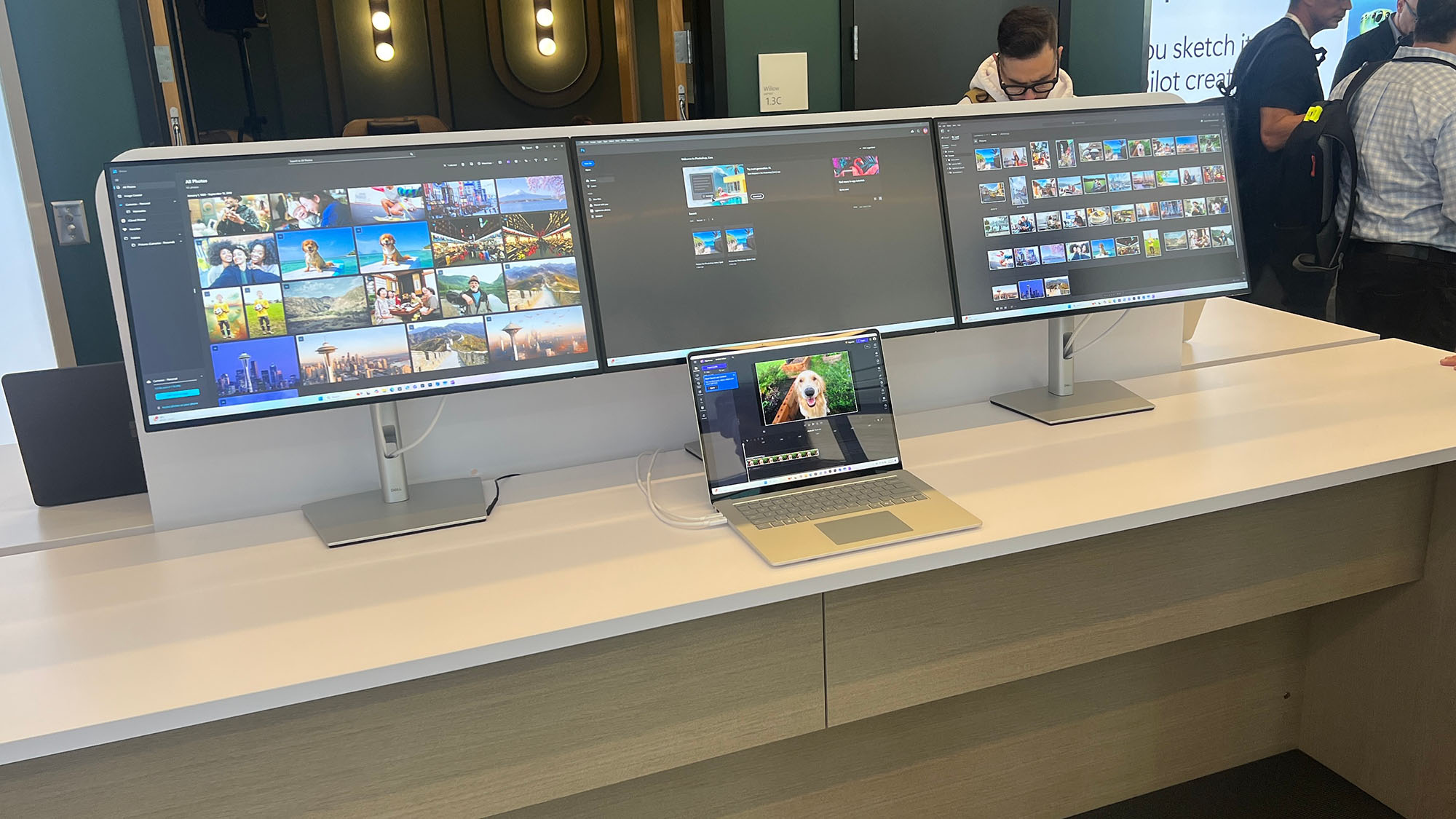
There's only so much I can say about the performance of the Surface Laptop, since I wasn't allowed to run any benchmarks or install any apps on the device. However, I did get to play around where I could and the system felt very responsive in a way previous Windows on Arm notebooks didn't.
I also got to try my hand with Microsoft Paint's Cocreator tool to sketch out an image in combination with text prompting. The iterative steps are carried out remarkably swiftly for a laptop without a dedicated GPU, and the output wasn't terrible.
Those who might be looking to illustrate documents or do some graphic design mock-ups will definitely find this feature useful. While I wasn't able to test any of this myself, the claimed 45 trillion operations per second (TOPS) performance of the Hexagon NPU is about 20% faster on paper than the brand-new Apple M4 chip, and 2.5x faster than the Apple M3 Max's NPU.
From what little I could glean from the available demos, on-device AI workloads do feel noticeably faster, but I won't be able to say for sure until we have the Surface Laptop in hand so we can test it.
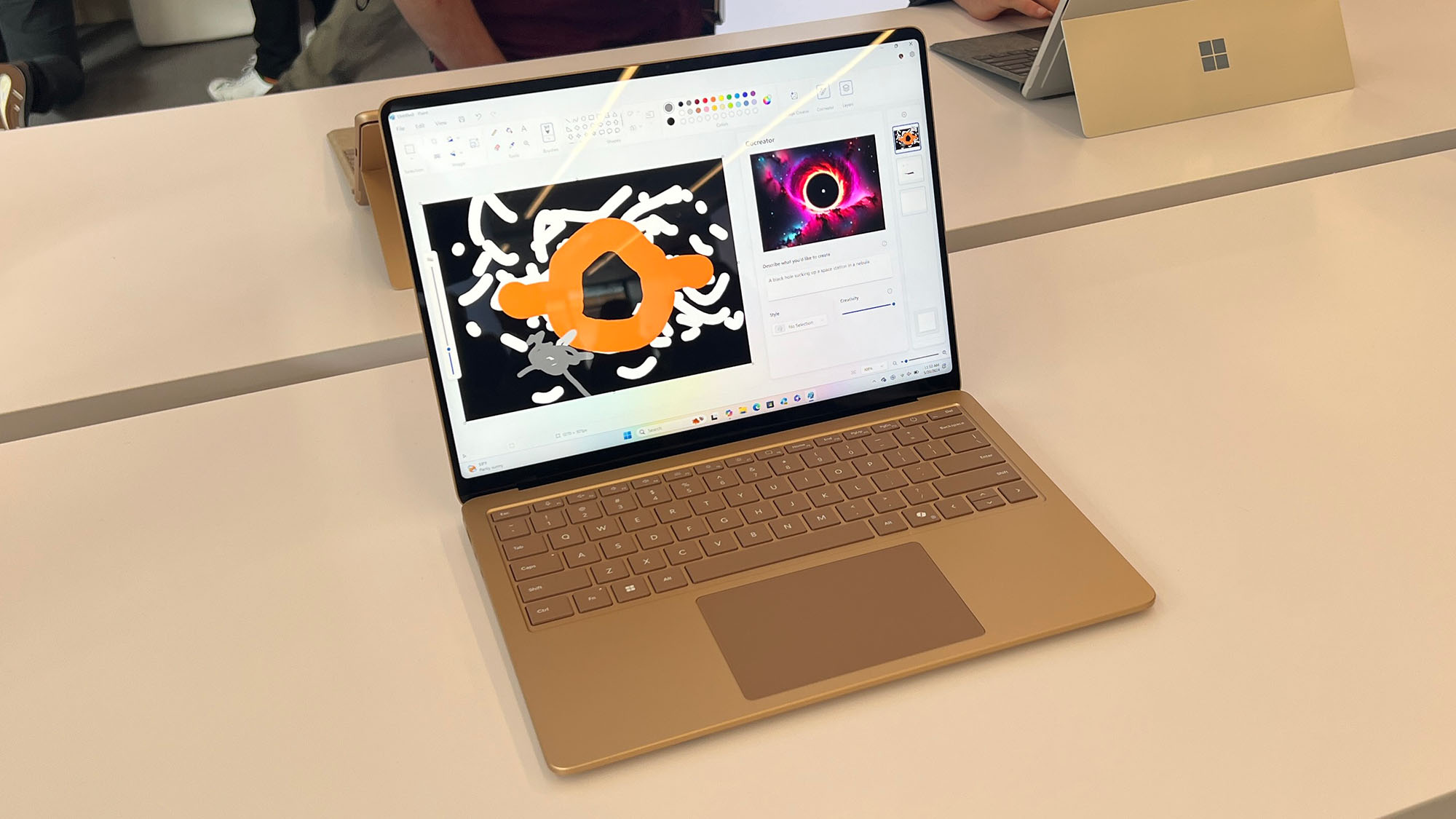
One thing that did catch my attention was Recall, Copilot's new ability to create a history of your on-device use. When I was fussing around with Cocreator in Paint to try and produce a space illustration with the text prompt "black hole sucking in a space station in a nebula" — along with a very crude sketch — Cocreator did an admirable job and came pretty close to what I was imagining (though it took its own liberties as well).
I clicked on the new Recall icon on the Windows 11 taskbar, which opens up a notification-like window on the taskbar that brings you right into Microsoft's latest tool to backtrack through your computing history. Here you can figure out what you did, what you saw, or what someone sent you, much like a web browser's history tracks the websites you visit for later revisiting if need be.
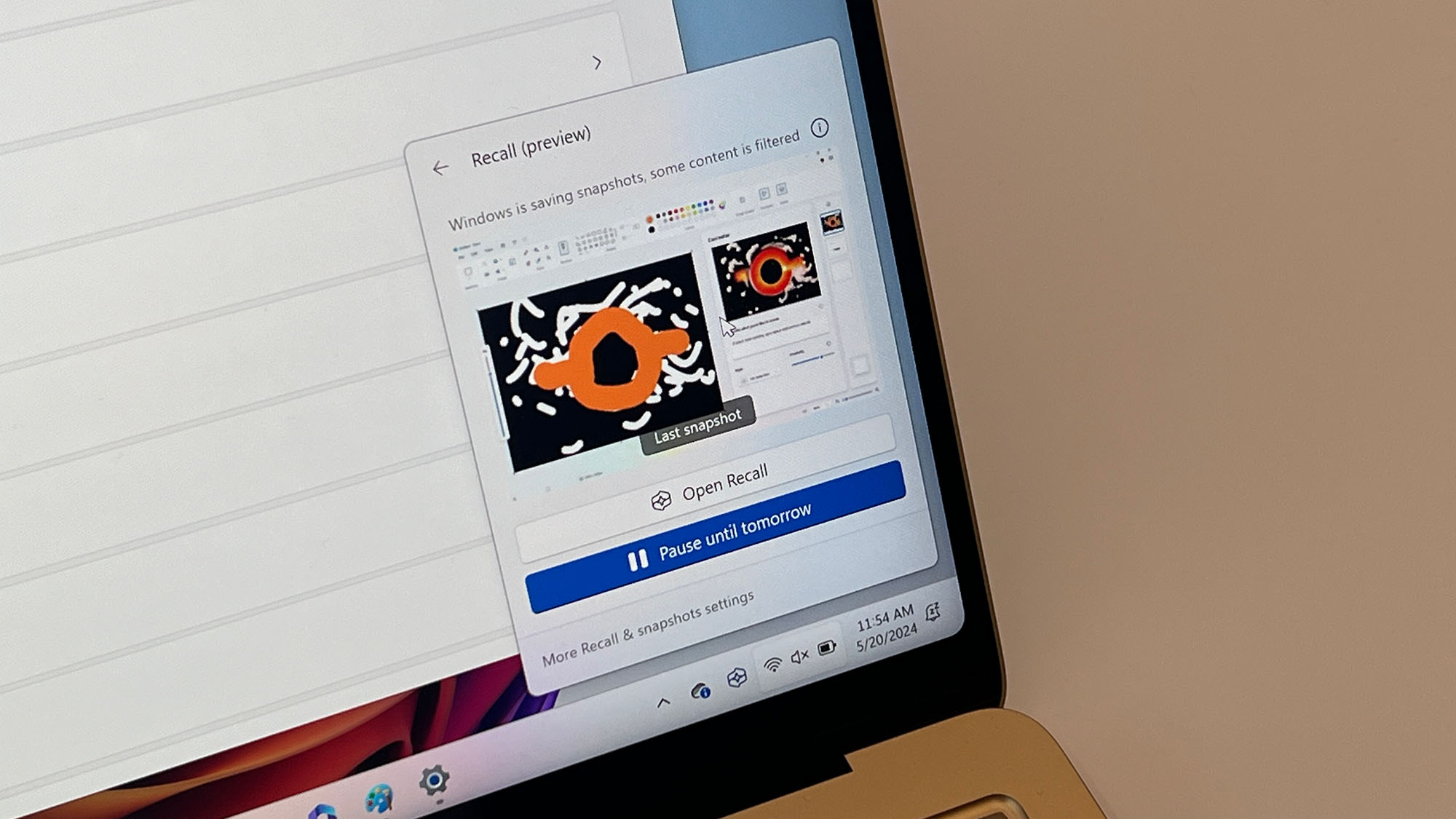
When I clicked that icon it brought up the Recall panel with the sketch I had put into Paint earlier in the afternoon. Since these were all fresh devices with clean installs, there wasn't a whole lot of other material in Recall just then, but as you use your PC, it'll fill up with snapshots of what you've done in the past, letting you go back through much like your browser history does now, just on a much grander scale.
Now I'm an AI-skeptic for the most part, in that I feel that many of the current AI tools and systems are deeply problematic and unethical, but I actually don't have a problem with Recall.
Yes, it's keeping track of everything you're doing, but it is on-device, and in a lot of ways it's a natural extension of your existing web history, File Explorer history, or any other number of similar tools. Once people get used to this feature, I expect that it will get some very heavy use, and I don't see that this will be as problematic as a lot of critics are making it out to be.
Microsoft Surface Laptop: Early verdict
I haven't been this excited about a laptop in a long time. No one was able to tell me anything about the performance of Qualcomm's Snapdragon X Plus or X Elite chips, and trust me, I asked. I asked them all. But one Microsoft representative at the showcase told me that they aren't just confident in the performance of these chips, they encouraged me to throw everything I had at them to see for myself.
I've heard PR reps say stuff like this before, and it usually comes with a level of bravado that is rather transparent. Everyone says that, even if we both know that it's bluster. That's not the vibe I got when they talked about the Surface Laptop. Not at all. It was something of a challenge or a dare, to me, to take my best shot at proving that the Surface Laptop wasn't as good or better than Apple's M3 or even M4.
The Surface Laptop is more stylish and interesting than anything Apple is doing right now beyond the iMac. It's as comfortable to use as a MacBook, it's as lightweight and portable, too, and it has industry-leading accessibility features built into it from the ground up in ways that Apple has just flat-out ignored in its hardware.
I won't know for many weeks whether Microsoft has managed to pull off all this, and so much will ride on whether it has genuinely fixed all of the issues with Windows on Arm that have prevented it from keeping pace with Apple these past four years, so it's too soon to pass judgment.
But when I was walking out of the press announcement and towards the showcase area on Monday, I passed two Microsoft employees hugging in celebration over this reveal, with one emotionally telling the other that "we finally got here." I keep thinking about that exchange I overheard, and I don't know yet where 'here' is, but I can't shake the feeling that a sea change is in the air.
0 comments:
Post a Comment